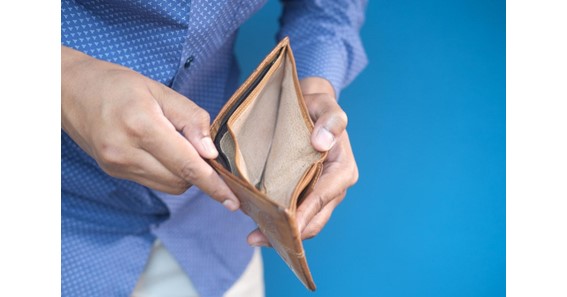Your emergency fund is the ultimate safety net. You know that if an unplanned expense ever falls into your lap, you don’t have to panic. You can rely on the savings sitting in your emergency fund to pay off the expense and recover from the problem right away.
That is, of course, when your emergency fund is full. What if your emergency fund is running empty? What can you do when you don’t have enough savings to cover an unplanned expense? These are some backup plans that you can turn to.
Credit Card
A credit card is an incredibly convenient backup plan for this type of scenario. It allows you to borrow funds to cover the emergency expense as soon as possible. So, you’ll be able to resolve the immediate problem and worry about repayment afterward.
Ideally, you should pay down this charge on your card’s balance before the next bill. If you don’t, you should at least make the minimum payment by the deadline to avoid a late fee. Then, focus on paying down as much of the outstanding balance as you can throughout the billing cycle.
You should only charge an emergency expense to your credit card when you have plenty of available credit left. If you don’t have much credit available and your balance is creeping close to the predetermined limit, you should avoid adding another transaction to the account. This could give you a much higher debt load to contend with. And at worst, it could push you into maxing out your credit card.
Cash Advance
Your credit card also comes with another borrowing option. Instead of charging a transaction to the card’s line of credit and paying it through the regular billing cycle, you can request a cash advance. A cash advance is a type of loan where you can borrow against your card’s line of credit. If that loan is approved, you will receive liquid funds (cash) in return.
These are some caveats that come with cash advances:
- You will have to pay a cash advance fee for this service.
- Unlike your regular credit card charges, you will not have a grace period for interest. The loan amount will collect interest immediately.
- The interest rate for a cash advance may not be the same as the interest rate for your other credit card charges.
Personal Loan
Another solution that you can turn to in an emergency is a personal loan. You do not have to make an appointment at your local bank branch to apply for a personal loan. You can find this credit option online. As long as you have access to a strong internet connection and a computer, you can fill out and submit your application from the comfort of your home. You just might get approved.
If you get approved for this credit option, you will gain access to a temporary set of funds, which you can use to pay off your urgent expense as soon as possible. After you’ve recovered from your emergency, you will need to follow a straightforward repayment plan.
Are you interested in this solution? Then you should learn about the requirements for personal loans online. You’ll want to know whether you’re eligible to even apply.
Avoid this Emergency Fund Mistake
Your emergency fund is still the most effective way to manage emergency expenses. So, you should do your best to stop it from getting empty. Automate contributions between your checking account and your emergency fund every month. You should always be adding to your fund, even if you think it’s already full. And you should set up low balance alerts through your online bank account or mobile banking app. This will warn you when the contents of your emergency fund are far too low and need refilling.
These borrowing options are just backup plans. They should only be solutions when your first plan (your emergency fund) isn’t going to work.
Click Here – What Is A Tabo?






